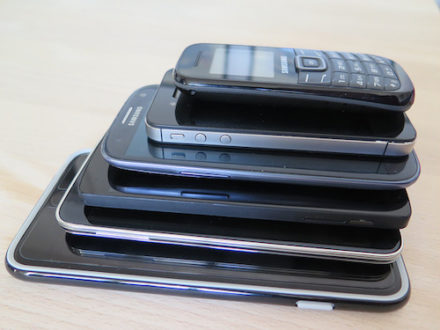
The below originally appeared as a case study in our 2015-16 Affordability Report.
While much of our work at A4AI centres around bringing down the cost of broadband data plans, there are other major expenses associated with accessing the Internet, including the cost to purchase and maintain an Internet-enabled device, and the cost of electricity needed to charge these devices.
Mobile phones represent the cheapest Internet-enabled device available on the market. As a result, most people in developing countries will have their first broadband experience on a smartphone, and will use a mobile phone as their primary device for accessing the Internet. The GSMA estimates that by 2020, 63% of connections globally will be through a smartphone.
However, the relatively high cost of smartphones continues to prevent many people from getting online. Though our Affordability Drivers Index analysis (found in our 2015-16 Affordability Report) does not directly examine device costs, reducing the cost of mobile devices will be a critical aspect of expanding access and enabling billions of low-income users to afford both a device and a broadband data package.
The cost of smartphones in developing countries has fallen over recent years — since 2008, prices have dropped by 30% in Asia, 25% in Latin America and the Caribbean, and 20% in Africa. Nevertheless, the cost of an average smartphone still remains out of reach for many. In order for devices to be considered affordable for the majority of people in developing countries, the GSMA recommends they be priced between US$25-50; yet, smartphones, on average, cost over two times that recommended “sweet spot”. Most smartphones still sell for US$100 or more in developing countries — equivalent to approximately 9% of annual income (or about an entire month’s income) for a person living in poverty (i.e., on under $3.10/day).
Even where individuals might be able to afford a smartphone, they might not be able to afford the additional costs associated with a data plan (as evidenced by at least one mobile phone group in Africa). When we add the price of a hypothetical low-cost US$48 smartphone to the price of a 500MB broadband plan, we find that across all countries, the total population that can actually afford both a broadband plan and a low-cost smartphone drops by 20% when compared with the percentage that can afford the broadband plan alone (under this scenario, the smartphone would add US$4 a month to the user’s overall cost). For some countries, like India and Pakistan, affordability drops as much as 60% when device costs are included.
In recent years, a number of device manufacturers (e.g., Mozilla, Google/Android One, Gionee, Huawei, ZTE) have released low-cost smartphones in developing countries, including some that cost as little as US$25. Operators in low-income markets have also taken steps to make smartphones more affordable (e.g., MTN in South Africa). However, many of these efforts have had less success than expected. For some would-be consumers, the price of these “low-cost” options remain out of reach; for others, the “low-cost” smartphones available on the market lack the functionality and quality necessary to convince users to purchase the device.
Private sector efforts to bring desirable low-cost smartphones to market should be applauded, despite the mixed results. It is clear, however, that more can be done, especially with respect to the costs associated with accumulated patent royalties. Royalty stacking — where a company must pay multiple royalties because its device, or components within its device, might infringe on an existing patent — is a significant challenge in the smartphone industry. Recent analysis suggests that patent royalties contribute as much as US$124 to the total cost of a US$400 smartphone — a number that appears all the more disproportionate when one considers that the physical components of such a phone generally cost between US$120-$150. This highlights a clear opportunity to make smartphones more affordable. Indeed, royalty stacking in the smartphone industry undermines the competition, investment, innovation, and reduction in cost required to make devices affordable for the majority of people.
Governments also have a role to play. A large portion of the total cost of a smartphone results from import and sales taxes levied on the devices. Governments in some countries — most notably in Africa, where device costs have fallen least since 2008 — have recognised that reducing such taxes can lead to higher future tax revenues by boosting economic growth. In July 2015, the government of Côte d’Ivoire, for example, took the bold decision to reduce taxation on smartphones from 27% to 6.5%. It is imperative that other governments take such steps and play their role in the proliferation of affordable smartphones.
Leave a Reply
